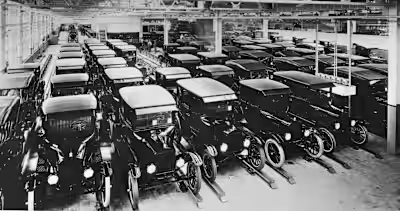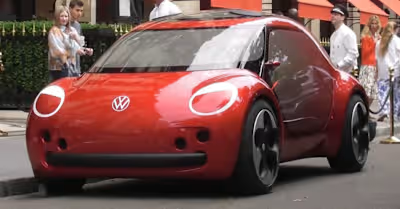The Mercedes-Benz Vision One-Eleven Revives An Eccentric Concep…
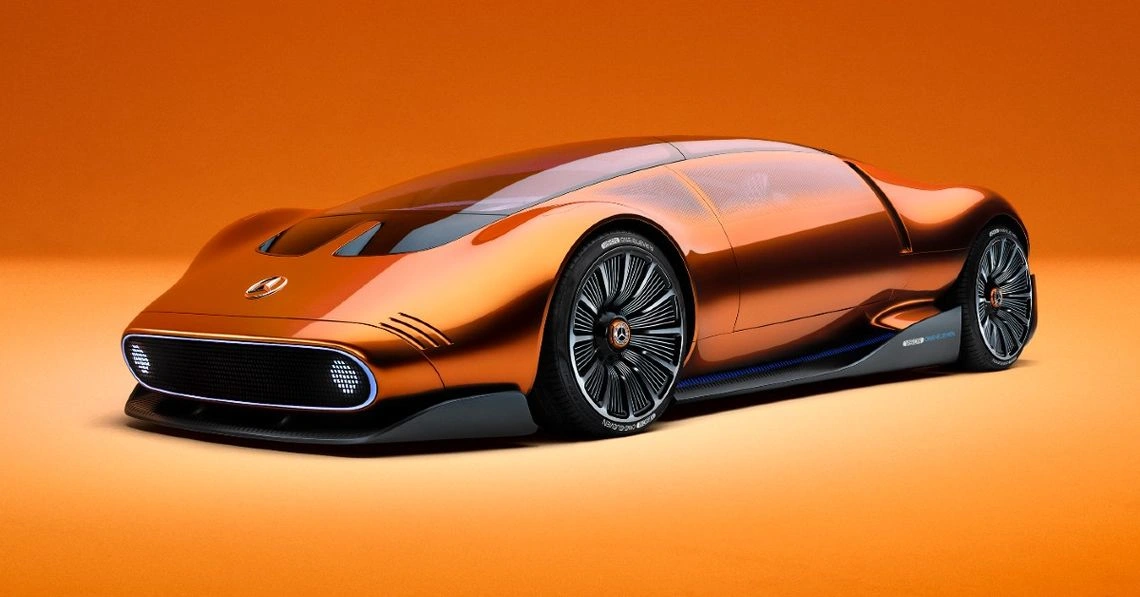
Mercedes-Benz
Mercedes-Benz have just unveiled the Vision One-Eleven concept sports car, and it seems like the future is now. The concept is a modern reinterpretation of the iconic C111 experimental vehicles from the 60’s and 70’s, which were used to test out the groundbreaking Wankel and turbodiesel engines of the day. The sleek and aerodynamic features made the C111 cars timeless design icons. Now, Mercedes has brought the C111 into the new millennium, complete with gullwing doors and eye-popping orange and black paintwork.
Like its legendary predecessor, the Vision One-Eleven blends jaw-dropping design with mind-blowing powertrain technology that paves the way for the future of high-performance vehicles. The concept is equipped with powerful axial flux motors from YASA, which pack a bigger punch than regular radial motors at just a fraction of the weight. Additionally, Mercedes have integrated the One-Eleven with augmented reality glasses for its big debut. Mercedes are really pushing the boundaries of design and technology, just like the renowned C111.
The Vision One-Eleven's Design Pays Homage To The C111
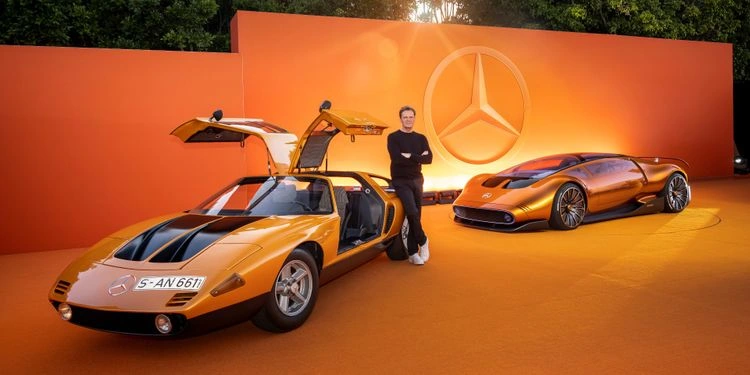
Mercedes-Benz
The aesthetic philosophy of the Vision One-Eleven follows Mercedes’ One-Bow design while adding high-tech features. The sleek and sporty body follows a smooth bow shape, starting at the low front end and continuing to the muscular rear. The copper-orange alubeam paintwork adds a unique touch, which is reminiscent of the iconic C111’s distinct color, but with its own modern twist.
The sculptural feel of the Vision One-Eleven is further complemented by gull-wing doors that fit flush to the body. Another eye-catching feature are the large-diameter wheels that seamlessly fit into the flared wheel arches, adding a touch of volume and aggression. The wheel design itself is pretty slick, with elements that resemble electric motor windings. This hints at the advanced all-electric powertrain hiding underneath. Two blade profiles run along the lower part of the car, which are integrated with piercings that light up in blue.
The front of the Mercedes-Benz Vision One-Eleven distinctively references the C111, but with some noticeable differences. Both cars feature a rectangular element with rounded ends. On the C111, this is a closed plastic piece with a honeycomb pattern and rounded lights. The Vision One-Eleven adds a modern twist to the classic round lights, turning the entire panel into a 3D pixelated external display. The digitized panel can even display messages to other drivers.
At the rear of the Vision One-Eleven, a beautifully sculpted diffuser grabs your attention. Like the panel on the front-end, the taillights are also integrated into a pixelated display. They are complemented by additional blue light effects that mirror the lights on the side blade profiles.
The Modern One-Eleven Concept Features Augmented Reality
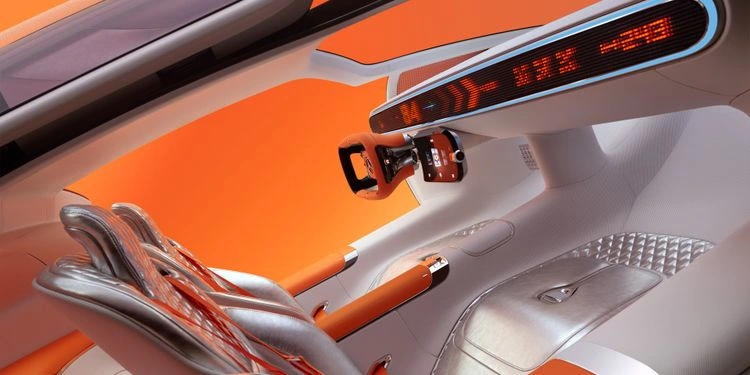
Mercedes-Benz
The interior of the Mercedes-Benz Vision One-Eleven is a seamless blend of sportscar minimalism and a lounge-like atmosphere. The concept car takes full advantage of the compactness of electric motors to expand the interior, creating lots of space to lean the seats back and relax.
The interior design features a bold color scheme and unique material combinations. The dashboard and other large surfaces are padded in white fabric with a tech-inspired pattern. In contrast, the armrest, center console, and rear parcel shelf are all decked in vibrant orange leather, adding a pop of energy to the mix. In addition to the white upholstery and orange leather, the interior also features touches of polished aluminum. The polished metal shines on the steering-wheel spokes, straps across the armrests, as well as the brake and accelerator pedals.
The only interior feature that doesn’t adhere to strict minimalism is the leather-clad steering wheel, which boasts various functional controls and advanced touch elements. Furthermore, a compact high-resolution touchscreen is neatly positioned to the side of the steering wheel. In addition to the touchscreen adjacent to the steering wheel, a pixel display stretches across the entire dashboard, following the form of the front and rear light bands. The pixel structure is intentionally coarse, giving the displayed information a bold and retro-futuristic look.
For the debut of the Vision One-Eleven, Mercedes-Benz have gone the extra mile to incorporate that sci-fi feel by using augmented reality. Their aim is to highlight the exciting blend of physical and digital elements in their concept sports car. When the driver puts on the Magic Leap 2 augmented reality headset, their world transforms into a virtual prototype of the Vision One-Eleven’s interior. High-definition digital content seamlessly integrates into their surroundings, turning the entire car into a user interface.
Mercedes-Benz Push Boundaries With Axial-Flux Electric Motors

Mercedes-Benz
The stunning design of the Vision One-Eleven is complemented by boundary pushing powertrain technology in the form of YASA axial-flux electric motors. These revolutionary motors are one third as light and as compact as traditional radial flux motors, which are found in most electric cars today. Despite their reduced size and weight, they deliver significantly more power.
The YASA axial-flux motors are powered by state-of-the-art batteries. The liquid-cooled cylindrical-cell batteries are all part of Mercedes-Benz’s four-pronged development strategy for electric drive. This cutting-edge technology is inspired by Formula 1 cell chemistry, and takes performance to a whole new level.
Why The C 111 Was Everyone's Dream Car
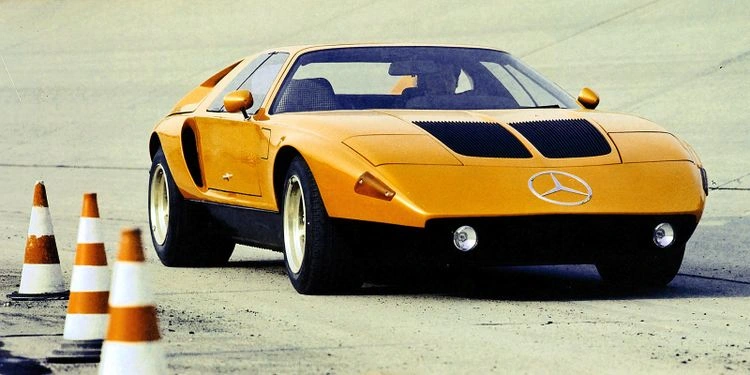
Mercedes-Benz
The Vision One-Eleven is the direct descendant of the legendary Mercedes-Benz C111. In the 60’s and 70’s, Mercedes developed the C111 series of experimental cars to test the groundbreaking technology of the day. This experimental tech included Wankel rotary engines, diesel engines, turbochargers, multi-link rear suspension, and advanced chassis designs.
The C111 truly pushed automotive innovation to its limits. Not only did the experimental car break both lap records as well as world records, but its design was absolutely jaw-dropping. The sleek and low-profile wedge design was simply mesmerizing, and popped in its signature orange color. And of course you had those iconic gullwing doors, reminiscent of the Mercedes-Benz 300 SL. It's no wonder Mercedes received many blank checks following its debut, as enthusiasts wanted to get their hands on the car, no matter the cost.
The C111 was stylish inside and out. The seats were available in black and white houndstooth, as well as a striking orange that perfectly matched the car’s exterior “weissherbst” color. This experimental sports car was designed for everyday use, and its interior reflects that. The C111 had a radio, a cigarette lighter, ashtrays, as well as air conditioning. A set of round dials on the dashboard gave you all the important information you needed, such as water and oil temperatures, fuel level, and oil pressure.
Of the twelve C111 cars that were built, eleven were powered by Wankel rotary engines. The 1969 car’s three-rotor Wankel engine had a punchy output of roughly 276 hp. Later that year and early into 1970, Mercedes kicked things up a notch by adding another rotor, bringing the power up to 344 hp. That rotary muscle gave the C111-II a top speed of 186 mph. The Wankel engines had their perks, given the compact size and responsive nature. However, even though the Mercedes-Benz engineers pushed the Wankel engine to its limits, it didn’t meet the high reliability and durability standards of the company. The last C111, built in 1975, was a record-breaking turbo-diesel test vehicle. The C111 set a truly high bar for its successor to follow.
Like this project
Posted Aug 4, 2023
Mercedes has brought the C111 into the new millennium, complete with gullwing doors and eye-popping orange and black paintwork
Likes
0
Views
36
Featured on





